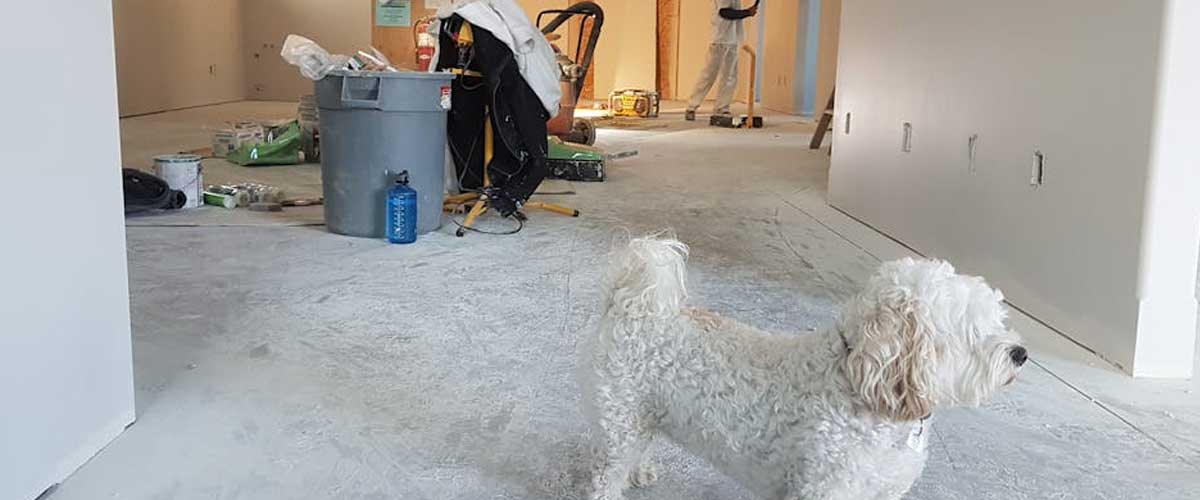Dogs are known for their incredible senses and adaptable nature, which makes them fascinating companions, especially when encountering new environments.
Bringing a dog into a new house can be an intriguing experience, not just for the owner but for the furry friend as well.
So, how exactly do dogs “work the room” in a strange new house they’ve never visited before?
Let’s explore the fascinating behaviors and instincts that guide them.
1. The Initial Sniff Test
As soon as a dog enters a new home, the first thing they often do is sniff around.
This behavior is rooted in their powerful sense of smell.
A dog’s olfactory sense is estimated to be up to 100,000 times more acute than that of humans.
By sniffing furniture, corners, and nooks, dogs gather crucial information about their surroundings.
They can detect not only the scents of the humans present but also other animals that might have been in the area, providing a wealth of information about who or what shared the space.
2. Exploring Different Levels and Spaces
After the initial sniff, dogs tend to explore different levels and rooms within the house.
They may initially stick close to their owner but gradually begin to roam freely.
This exploration is a natural instinct as dogs assess their new environment.
They keep an eye out for cozy spots, potential hiding places, or areas that seem intriguing.
Whether it’s a comfy couch or a sunlit corner, they are on the lookout for comfortable areas that could serve as their new favorite hangout.
3. Observing Social Dynamics
Dogs are inherently social creatures, and they are keen observers of the behavior of their human companions.
In a new environment, they will often look for cues on how to behave based on how their owners and other pets interact.
Dogs gauge their human’s reactions and adjust their behavior accordingly to determine safe boundaries, playfulness, or stress.
This ability to read social dynamics helps them feel more secure in unfamiliar surroundings.
4. Marking Territory
In addition to sniffing, dogs may also feel the need to establish their presence in the new space.
This can manifest as subtle territorial marking behaviors.
While this isn’t always a necessary behavior, some dogs might feel the urge to claim their space through scent marking by urinating or rubbing their body against objects.
This instinctual action helps dogs communicate their presence to others.
It’s essential for owners to monitor this behavior and reinforce house training rules, especially in unfamiliar areas.
5. Finding a Safe Space
As dogs explore, they may seek out a quiet spot where they can observe their new environment.
This could be a designated bed, a corner, or even a cozy area under a table.
The act of finding a safe space allows them to calm down and feel secure as they process the new sights and sounds around them.
Owners can help this by providing a familiar blanket or toy, giving the dog a sense of comfort in this strange place.
6. Engagement and Interaction
To help a dog adapt to a new space, engagement and positive interactions are crucial.
Owners can encourage their dogs to explore by using treats, toys, or gentle encouragement.
Engaging in playtime or using commands familiar to the dog can create a positive association with the new surroundings.
This interaction not only helps them adjust but also strengthens the bond between the pet and their owner.
7. Understanding Fears and Anxieties
Some dogs may react differently to new houses depending on their past experiences.
While some might be curious and confident, others might show signs of anxiety or fear.
Recognizing these emotions and providing a supportive environment can significantly ease the transition for anxious dogs.
Owners should be patient and allow their dogs to explore at their own pace, providing reassurance and comfort
throughout the process.
Conclusion
In conclusion, dogs have an intricate way of navigating and adapting to new environments.
Their sense of smell, coupled with natural instincts and social behaviors, allows them to assess their surroundings quickly.
When introducing a dog to a new house, understanding their behavior helps create a comfortable and safe space for them.
With the right support and engagement, dogs can confidently make any house feel like home.









